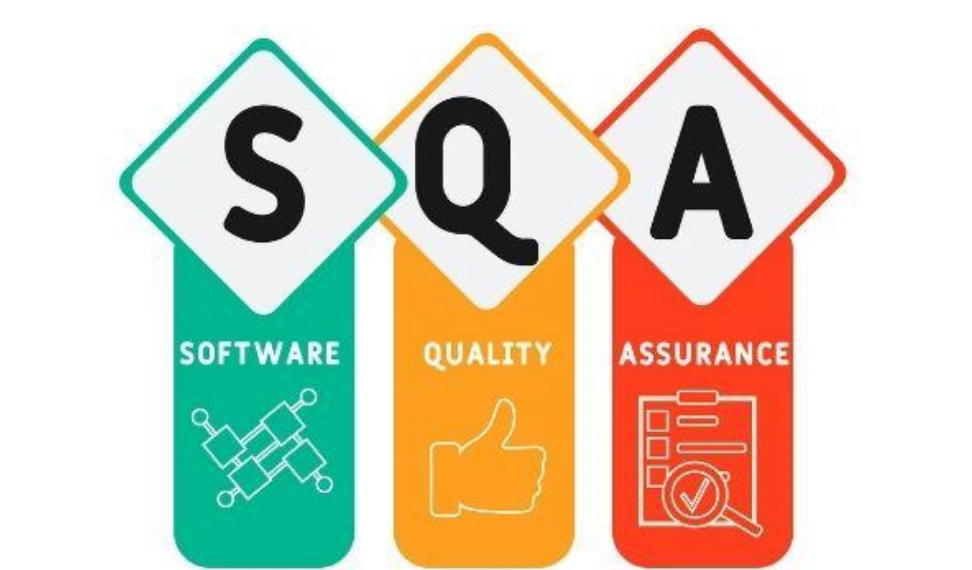Software Quality Assurance (SQA) is a set of ways and methods that ensure quality at all stages of the software process. Software quality assurance (SQA) guarantees that the entire team follows all the proper procedures while putting the project into action.
The most important goal of software quality assurance is to find and fix the defects of the product before it is released to the market. If errors are found during the development of the project, it means time and financial savings for the developing team, and happiness for the customer.

What is Quality & Assurance?
Quality can mean different things in many areas. However, with a short and general definition, it can be said that it is the most suitable for use and purpose. Quality is the price, function and design of a product in accordance with the expectations of the customer.
Assurance means that the product is safe and in the service offered. It guarantees that the resulting product will work undamaged and safely. It assures that the product will work as expected and meet all the wishes of the user.
Software Quality Assurance Activities
Companies have their own software processes and standards. However, there are some activities common to software quality assurance.
- SQA Establishment Plan:
Before starting the project, a plan should be made for how software quality assurance will be carried out and managed. Which IT procedures are ideal for the project should be discussed and the team to manage it should be of the best quality.
- Set Checkpoints:
While planning the project, the project control is carried out at intervals determined by the team responsible for software quality assurance and the efficiency of the project is measured.
- Multiple Testing Strategies:
Throughout the project, it is necessary to work not with a single test technique, but with multiple test techniques suitable for the project.
- Monitoring and Measuring the Change Made:
After a bug has been fixed in the project, the software quality assurance team should perform a general check to see if this change has impacted elsewhere.
- Make Checks:
Software development and life cycle (SDLC) procedures are compared with those carried out throughout the project, and incompatibilities are identified and a report is generated.
- Good Relationships:
Good relations between the entire team involved in project development and the software quality assurance team increase the efficiency and quality of the project.
Objectives of Software Quality Assurance Activities
Software quality assurance encompasses a variety of methods and measures, such as calculating metrics for code, enforcing coding standards, and demonstrating that run-time errors don’t exist. Some of the objectives of that SOA activities :
Software Maintenance – Product Oriented Goals
- To harmonize the scheduling plan of software maintenance activities and the material part of the budget to be created accordingly.
- To increase the efficiency of the Software Quality Assurance process, to reduce the cost of software maintenance and product development and to ensure that the requirements are met.
- To provide the technical equipment necessary for software maintenance.
Software Development – Process Oriented Goals
- Increasing the efficiency of the Software Quality Assurance period and initiating and managing software development activities. In this way, it is ensured that the requirements are met by reducing the costs and increasing the functionality.
- Acceptance of technical requirements in the software development process.
Why is Software Quality Assurance Important?
Having a reliable Software Quality Assurance is important not only for the customers, but also for the project owners and the quality of the product.
The first priority of a company is to have a user-oriented quality product to be purchased. For this priority, it must be a quality software product. The quality and reliability of the created product can be understood through software quality assurance.
Software quality assurance is a necessary process in the software development to produce the highest quality products. A product that does not go through this process can lead to customer dissatisfaction, product inefficiency, loss of performance within the team, and major financial losses.
A product that does not pass software quality assurance can lead to irreversible financial losses.
From this point of view, changes can be made over time for a high quality product. The product will be flexible and less time and cost will be spent on its maintenance.
What is a Quality Assurance Plan in Software Development?
The Software Quality Assurance Plan, abbreviated as SQAP, includes all documents, tools and techniques used to ensure that the requirements of the product to be created and the requirements determined within the project are compatible with each other.
It contains all the equipment necessary for the company to implement quality assurance.
SQAP includes the following sections:
- Aim
- Reference
- Tools, technologies and methodologies
- Software configuration management
- Code Check
- Problem reporting and corrective action
- Records: Collection, maintenance and storage
- Test methodology
SQAP is the most important step in software quality assurance. It prevents the interruption of the process or the system to take over in case of any malfunction. After the necessary documents are obtained, the desired changes can be made on the project easily.
The plan is the first and most important stage for the quality of the product.
Benefits of Software Quality Assurance
It saves time:
Solving the problem during the production and distribution phase of a product leads to much more loss of money and time than solving it at the initial stages such as design coding requirements.
Consumer satisfaction:
The customer always prefers the high quality, efficient and reliable product. You can catch the increase in the customer with the quality product.
Cost saving:
If a faulty product is introduced to the market, it can lead to huge financial losses. From not using the products to correcting them, separate costs can be incurred, from the elimination of the defects. Also, the company will lose its earned reputation. Software quality assurance guarantees as few errors as possible.
Product security:
No matter how much security appears in the physical sense, the security of applications is as important in terms of privacy. For example, using the user’s credit card in the product and keeping it hidden. If a security vulnerability occurs in the product, it can cause huge problems.
Market share:
A high-quality software will greatly increase the company’s market rank.
Disadvantages of Software Quality Assurance
Some disadvantages of software quality assurance:
- Adding more resources for the quality of the product.
- Employing more staff for product efficiency and quality, or the whole team being an expert in their field.
- Spending more for product reliability.
Requirements for Software Quality Assurance
- The Test Environment is Robust and open to all testing techniques
- Determining the necessary criteria for product release and distribution
- Saving time and money by prioritizing automation tests
- Making the plan correctly and separating it into processes and determining the duration of these processes correctly
- Correct execution and follow-up of software test error reports
- Correct selection and control of all team members
Who is Responsible for Software Quality Assurance?
Everyone is responsible for software quality assurance, starting from the person who considers that software when developing a software.
Software testers in this team play a major role in examining the product, finding faults, bringing the product to a higher quality level, and software quality assurance.
Software developers and software testers do not perform the same task. Software testers are responsible for debugging and reporting errors in the codes written by the developers.
Of course, this is not possible without software developers, that is, without writing codes. Therefore, correcting bugs, testing software and writing the best code is also software quality assurance.
Conclusion
Software quality assurance is the most important process used throughout the software development and life cycle.
In order for the software product to do the highest quality and most efficient work, the project and its requirements should be compatible and the technique and tools should be in this direction.
It is an indispensable activity for the product.






